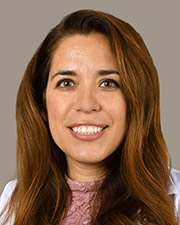The Placenta Accreta Program at UTHealth Houston
Placenta accreta spectrum disorder (PAS) is a complex clinical diagnosis where the placenta does not entirely detach after birth and cannot be removed without causing significant morbidities to the mother. The Placenta Accreta Program in the Department of Obstetrics, Gynecology, and Reproductive Sciences at UTHealth Houston is dedicated to providing coordinated care to mothers with this diagnosis through a multidisciplinary approach from a broad spectrum of healthcare providers.
Three Options for Managing a Significant Obstetric Complication
Placenta accreta is an infrequent placental anomaly, usually diagnosed at the time of the mid-trimester anatomy ultrasound at 18 to 22 weeks of pregnancy, but it may be discovered later, including at delivery.

Baha M. Sibai, MD
“Diagnosis requires sophisticated color Doppler, pulsed Doppler, 3D sonography, and in some cases MRI to detect any involvement of the placenta with adjacent abdominal organs. Patients with placenta accreta are at risk for morbidity and mortality because of life-threatening hemorrhage, which makes this a very frightening condition for mothers,” says Baha Sibai, MD, a maternal-fetal medicine specialist and professor in the Department of Obstetrics, Gynecology, and Reproductive Sciences at McGovern Medical School at UTHealth Houston. “Physicians who see mothers with placenta previa in association with a history of cesarean or uterine surgery should refer them to a maternal-fetal medicine (MFM) specialist at a center with the expertise to diagnose placenta accreta spectrum. Our multidisciplinary team offers three options for treatment and is adept at counseling, which is extremely important for these mothers.”

Rosa A. Guerra, MD
As the spectrum progresses, the placenta can invade the perimetrium, bladder, and bowel. “When a patient at risk for placenta accreta is referred to us, we activate our team, which includes experts in maternal-fetal medicine, sonographers and radiologists specialized in fetal and maternal imaging, anesthesiologists, neonatologists, inpatient and outpatient nurse navigators, a skilled labor and delivery team, and blood bank access. I participate as a gynecologic oncologist and Dr. Sibai and Dr. Sean Blackwell provide the placenta accreta expertise on the MFM side,” says Rosa A. Guerra, MD, an assistant professor in the department.
“We are careful to explain to patients that they do not have cancer, but that the delivery can be a complex surgical challenge with the potential for organ damage, which is territory familiar to gynecologic oncologists. Studies have suggested that outcomes are improved when we are included as part of the team. We see quite a lot of patients with placenta accreta and have streamlined our process. When they come for their frequent evaluations, they come to one clinic and our entire team goes to them, instead of asking them to go from doctor to doctor.”
The three options for treatment offered at UTHealth Houston are C-section and hysterectomy, delayed hysterectomy, or keeping the uterus for a potential future pregnancy. All patients are counseled on the risks and benefits of each approach. “We work with patients to determine the best solution to make the delivery less morbid and complex for the patient,” Guerra says. “All three options require close follow-up until there is complete resolution.”
- According to the American Congress of Obstetricians and Gynecologists, the generally accepted approach to placenta accreta spectrum is cesarean hysterectomy with the placenta left in situ after delivery. Attempts at placenta removal are associated with significant risk of hemorrhage.
- If the placenta invades the bladder or surrounding tissues, delaying the hysterectomy allows time for the accreta to shrink, lessening the risk of potential injury to other organs, bleeding, and admission to the ICU.
- Some patients opt for potential future fertility. “We counsel them extensively about the importance of follow-up. We continue to monitor them after delivery for signs of infection or bleeding, which are risk factors, while the placenta shrinks and reabsorbs. With our expert team and streamlined process we can act quickly if there is any reason for concern,” Sibai says. “This is an important option for women who want to keep their uterus for a potential future pregnancy or for cultural or religious reasons. We always counsel them that we may need to do a hysterectomy, depending on what happens during the delivery. We are the only team in Houston that offers this option.“
“We can’t overemphasize how important follow-up care is, including continued imaging, support, and counseling, which is where our nurse navigators, Sandra Uribe on the inpatient side and Holly Howington on the outpatient side, play such an important role,” Guerra says. “Physicians are always nervous about leaving a placenta because of the potential for bleeding, septic shock, or other complications. These mothers need to be treated at a center with resources in place for comprehensive follow-up in case complications do occur. Sandra and Holly make sure our patients have everything they need physically and emotionally and are true assets to our team.”